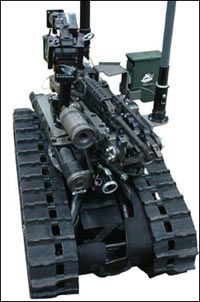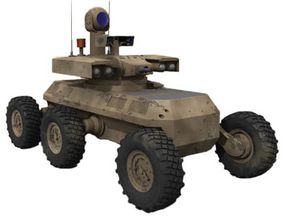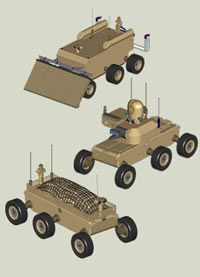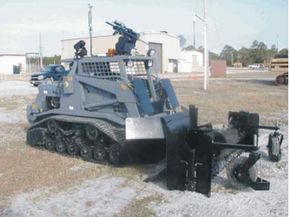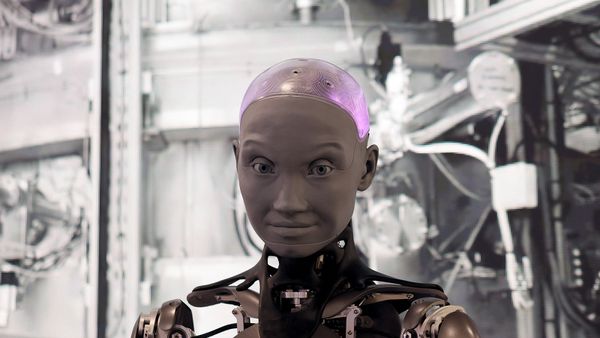
"The Terminator" showed us a future where battalions of sentient, humanoid robots wage war on mankind. While that vision is still well within the realm of science fiction, many countries are looking into creating robot soldiers, including the United States. In fact, in 2001, the Floyd D. Spence National Defense Authorization Act set a goal for the U.S. Armed Forces -- create an unmanned combat vehicle force that would account for one third of all vehicles in operation. So far, the robot designs don't resemble the Terminator, but they can be just as lethal.
The U.S. Army's Future Combat Systems (FCS) plan is a comprehensive strategy to upgrade the nation's military systems across all branches of the Armed Forces. The plan calls for an integrated battle system -- a fleet of different vehicles that will use up to 80 percent of the same parts, new unattended sensors designed to collect intelligence in the field, and unmanned launch systems that can fire missiles at enemies outside the line of sight and several robots.
Advertisement
The robots are divided into four categories:
- Unmanned Aerial Vehicles (UAV) designed for surveillance and reconnaissance missions
- Small Unmanned Ground Vehicles (UGV) that can enter hazardous areas and gather information without risking the lives of soldiers
- Multifunctional Utility/Logistics and Equipment (MULE) vehicles designed to provide combat support in conflict situations
- Armed Robotic Vehicles (ARV) that weigh 9.3 tons and can either carry powerful weapons platforms or sophisticated surveillance equipment
The MULE and ARV vehicles might mark the beginning of a new kind of warfare. There are three proposed versions of the MULE, all of which will roll around on wheels. Two of the variants, a transportation vehicle that could carry more than a ton of equipment and a vehicle designed to detect and disable anti-tank landmines, are similar to current military robots. The third variation is an Armed Robotic Vehicle-Assault-Light (ARV-A-L) device. It will have a reconnaissance, surveillance and target acquisition (RSTA) package and integrated weapons. In other words, this robot is similar to a human soldier who can engage the enemy in combat.
The ARV robots are less like soldiers and more like tanks. In fact, the Army's intention is to use the ARV-A robots as support for manned vehicle missions. The commander of a tank squadron, for example, could use ARV-A robots to extend his team's area of influence without the need for more soldiers. The robots could take the most dangerous positions and provide support whenever the manned vehicles enter a combat situation.
Due to budget cuts, many of the more expensive initiatives included in FCS may need to be postponed indefinitely. The MULE and ARV vehicles fall into this category. As a result, it may be several years before we see U.S. robots being used as combatants in war scenarios. Still, the U.S. military is determined to continue investing in robots with the hope that one day robots can take the place of human soldiers in dangerous situations.
In this article, we'll look at how these robots will work, and how robot soldiers might change the face of warfare forever.
In the next section, we'll look at the role of the robot soldier.
Advertisement
